‘Open Museum Architecture – A Curator’s Perspective’
The Towada Art Center was established in 2008 as the centrepiece of the Arts Towada project, which envisions the entire city of Towada as a living museum. The museum's presence extends beyond its walls, with artworks placed in the front yard, the plaza across the street, and throughout the city, creating a seamless connection between the museum and the town. This "open" concept, where boundaries between the museum and the city disappear, is also reflected in the architecture designed by Ryuji Nishizawa. The museum consists of several white box-like structures in various sizes, all coming together to form a single building. These white-box galleries feature large glass windows, allowing people to see the exhibitions from the outside.
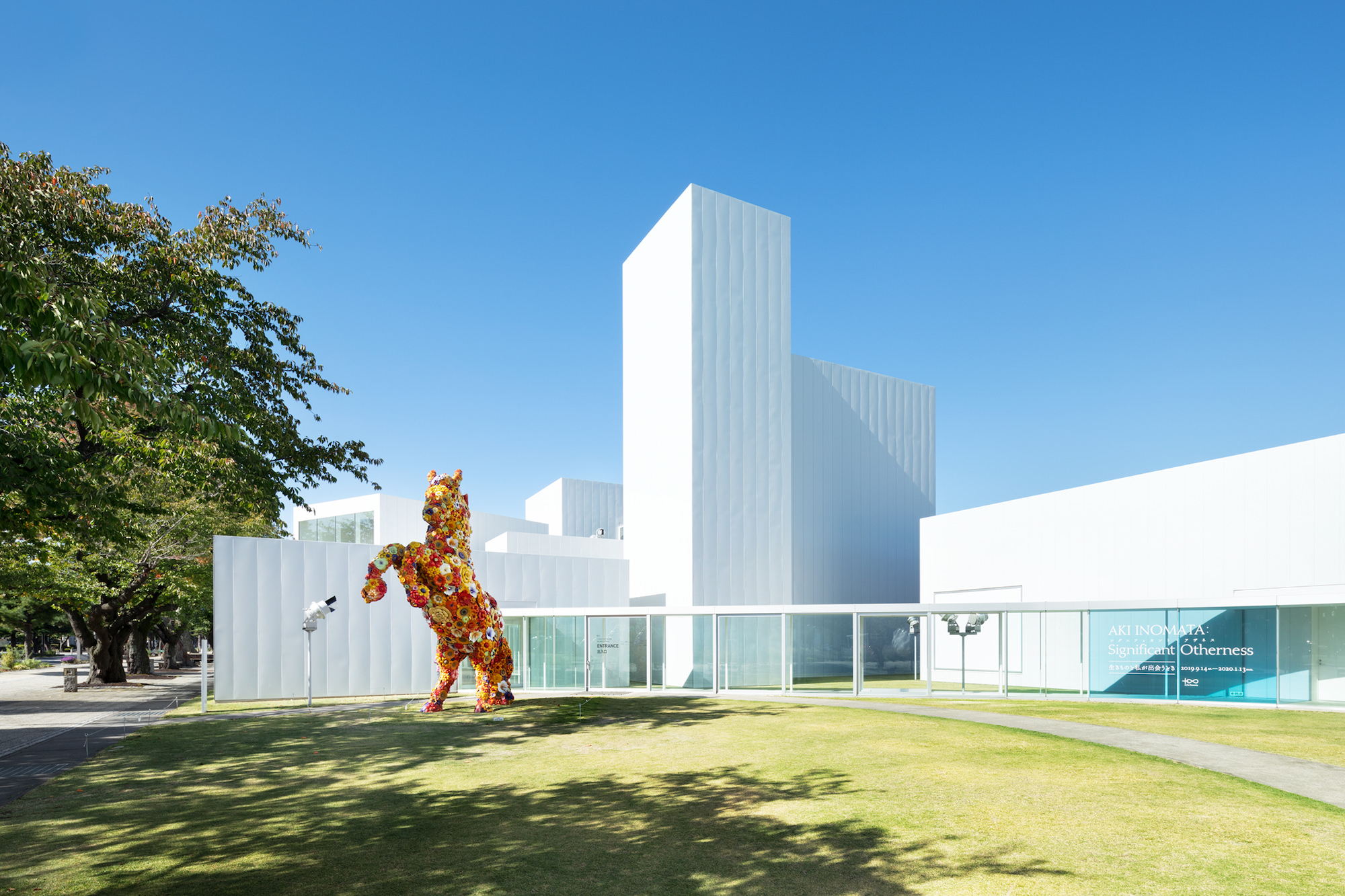
Permanent Exhibition Rooms Opening to the Street
The museum houses 13 permanent exhibition rooms, including the rooftop, with each room dedicated to a single work of art. These rooms are carefully designed for each specific piece, with the size and amount of natural light adjusted to suit the artwork. For example, the chandelier-like shape of Korean artist Do Ho Suh’s work Cause and Effect can be seen from outside the museum, with light cascading down. Inside, visitors can experience the piece up close, where they are surrounded by its intricate details. As you approach the artwork, the deep red gradually fades into a transparent hue, while you face the expressionless figure of a person. The experience of the artwork changes depending on whether you’re inside or outside the room, with the room’s design emphasizing these differences. On the other hand, works like Location (5) by Hans Op de Beeck, which require a closed space with blocked natural light, are displayed in rooms located on the opposite side of the street.
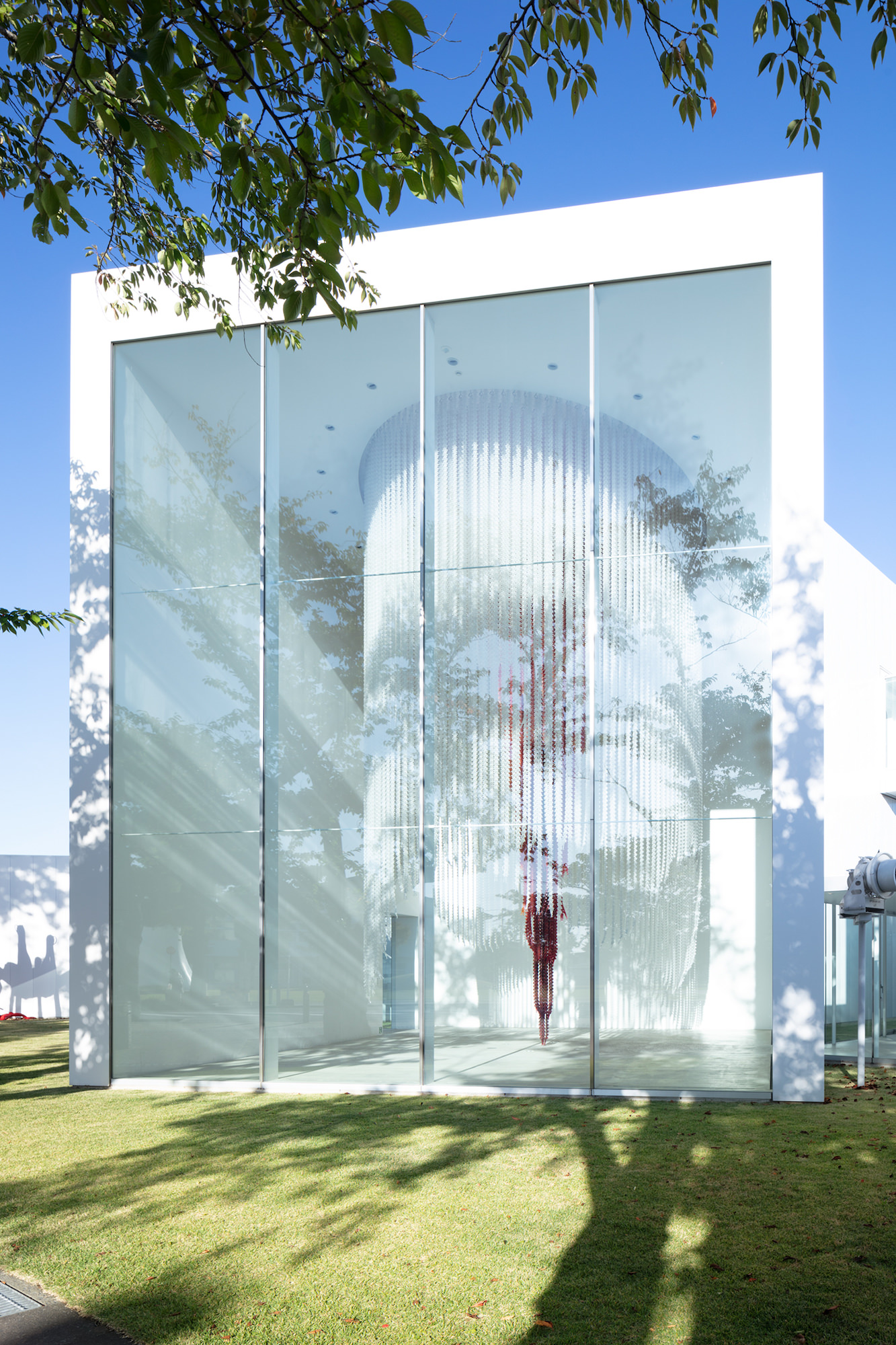
Photo: Ota Takumi
The Courtyard Between the Buildings
The arrangement of white-box exhibition rooms at varying angles creates several unique spaces between the buildings. One such space is the courtyard, where you'll find Yoko Ono's Wish Tree for Towada, Riverbed, and Bell of Peace, as well as Morikita Shin's Flying Man and Hunter displayed between the exterior walls. This courtyard functions as a transitional space between the indoors and outdoors, blurring the lines between the two.
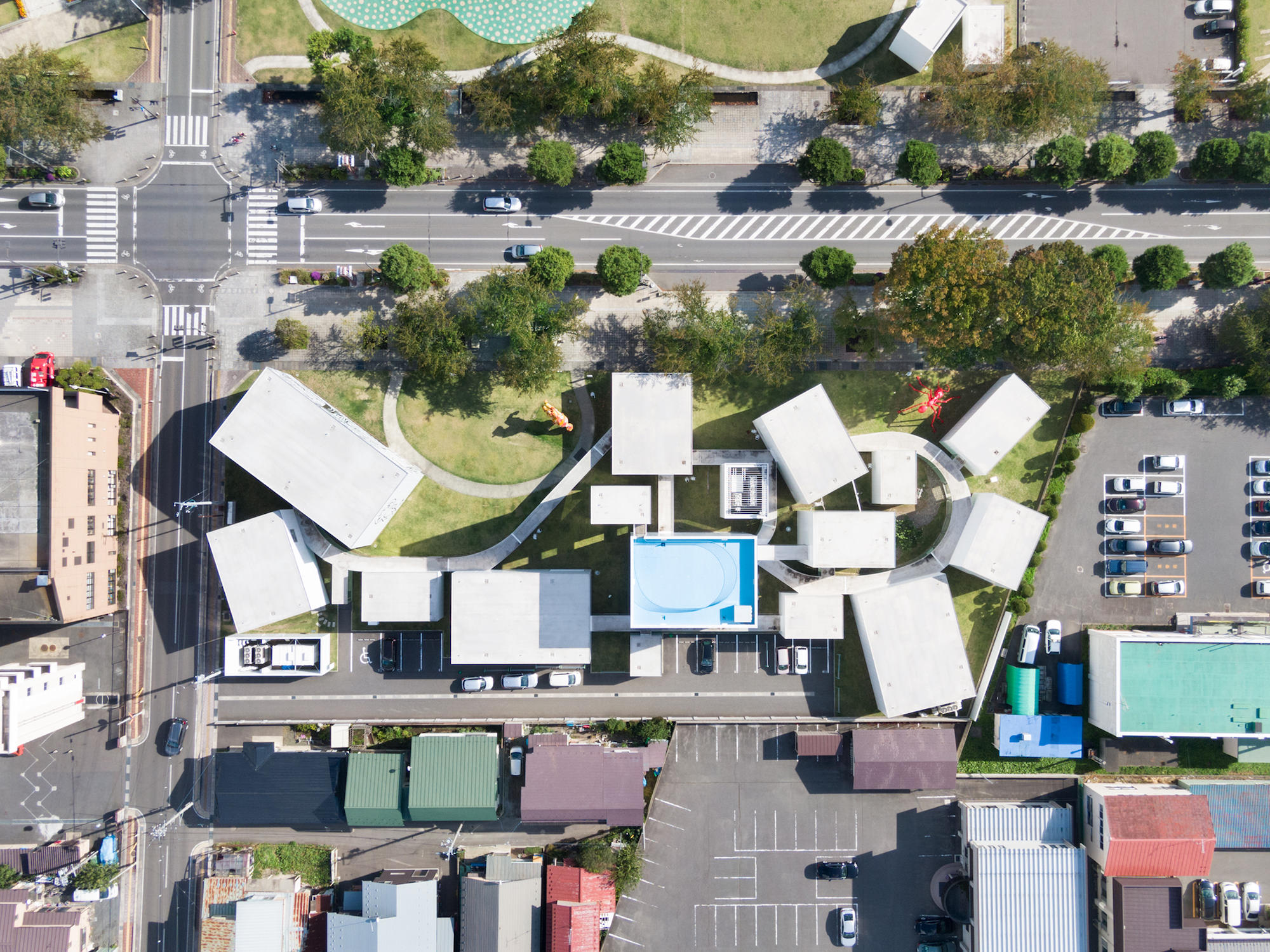
Exhibitions Beyond the Display Rooms: Stairs and Elevators
In addition to the exhibition rooms, the stairs connecting the second floor to the rooftop feature Wall Painting by Federico Herrero, while the elevator showcases there, here and over there / tiny thing I lost by Yamagiwa Mitsuhiro. These works flow beyond the designated gallery spaces, enriching the building’s functional areas and expanding the architectural experience.
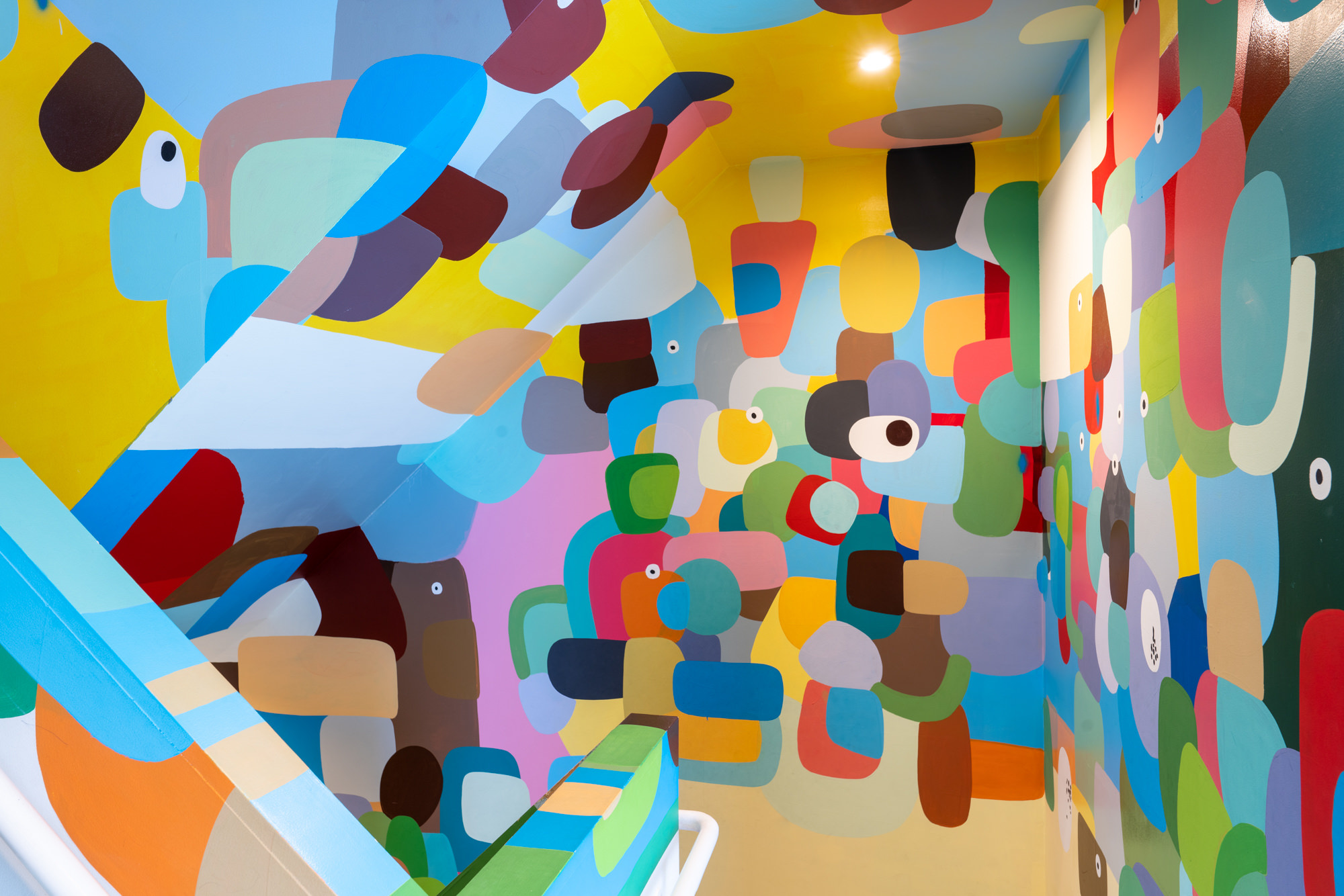
Photo: Oyamada Kuniya
Transparent Corridor
The glass corridor connecting the exhibition rooms is flooded with natural light, offering a sense of openness as though the visitor has stepped outside. Through its transparent walls, visitors can catch glimpses of the next exhibition space, subtly drawing them into the experience ahead.
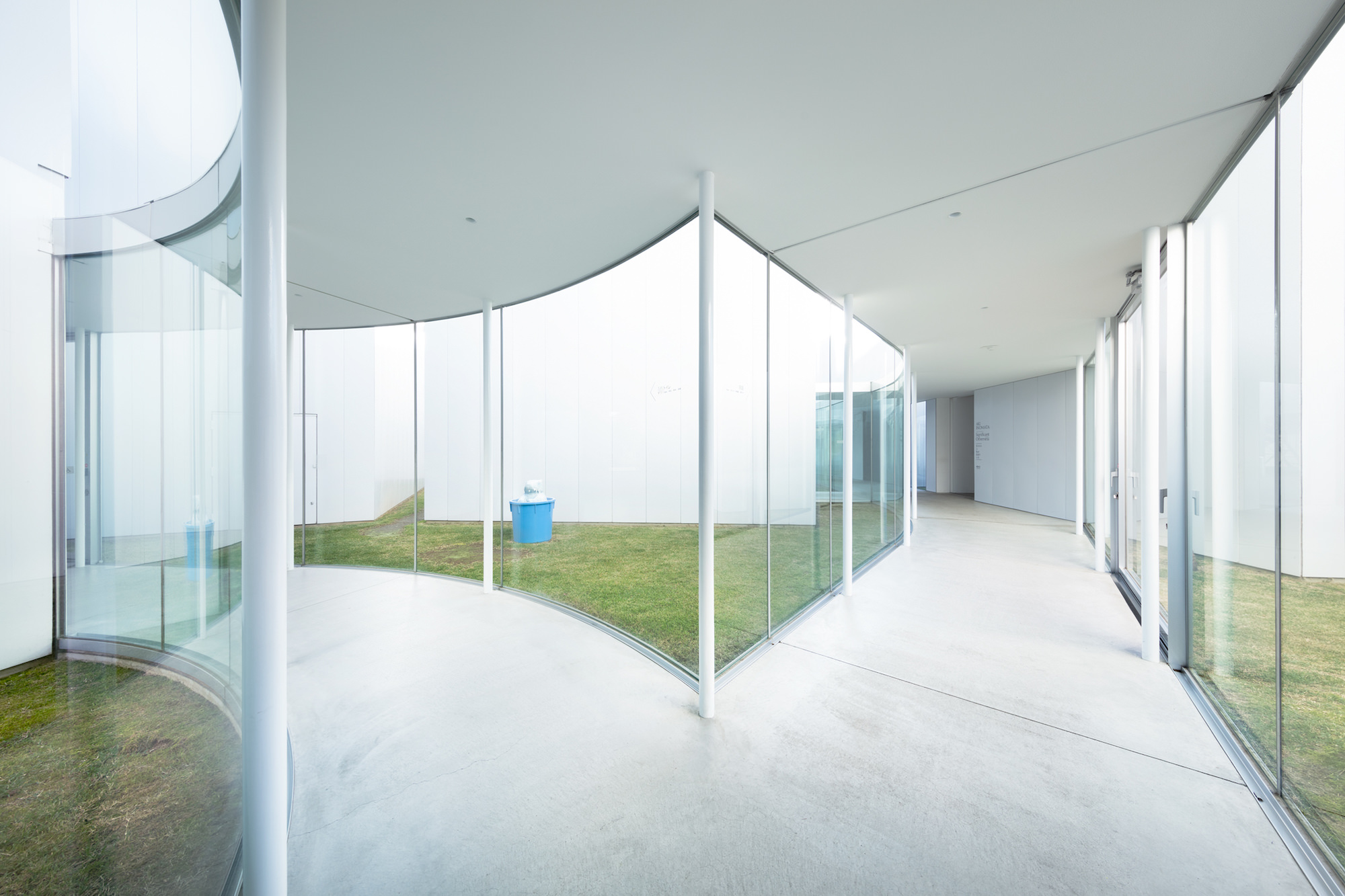
Transforming Exhibition Spaces
The museum features three distinct exhibition spaces: Gallery 1, a large, open area with a height of about 5 meters; Gallery 2, a smaller, more intimate space with a height of about 2.4 meters; and Gallery 3, which stands at approximately 4.4 meters. Gallery 1, like the permanent exhibition rooms, is defined by its large glass windows that allow natural light to flood the space. This design makes it ideal for exhibitions that evolve with the changing light throughout the day. However, depending on the artwork, the windows can be covered and the walls painted black, transforming the gallery into a completely enclosed space for projections and other media-based works.
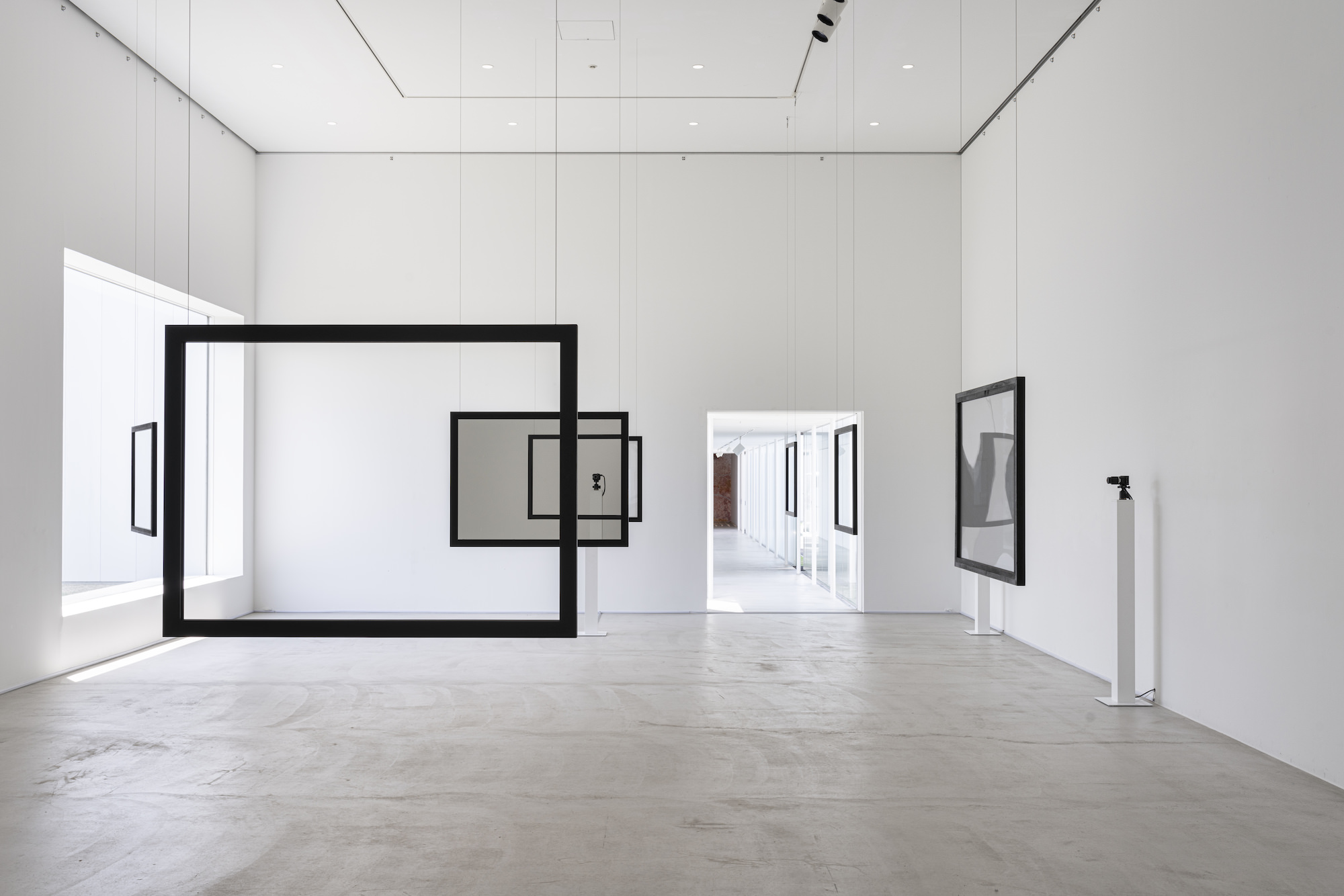
Photo: Oyamada Kuniya
Café and Shop
This space, with a floor design by Michael Lin called Untitled, functions as a café, shop, lounge, and library all in one. Access to the space is free to the public, offering a place where locals and tourists can casually stop by to enjoy sweets, light snacks, and a relaxed atmosphere. The walls often showcase pieces from current exhibitions, adding an artistic touch. Additionally, this space hosts events such as artist talks and community-run performances, making it a lively hub for visitors to engage with the arts.
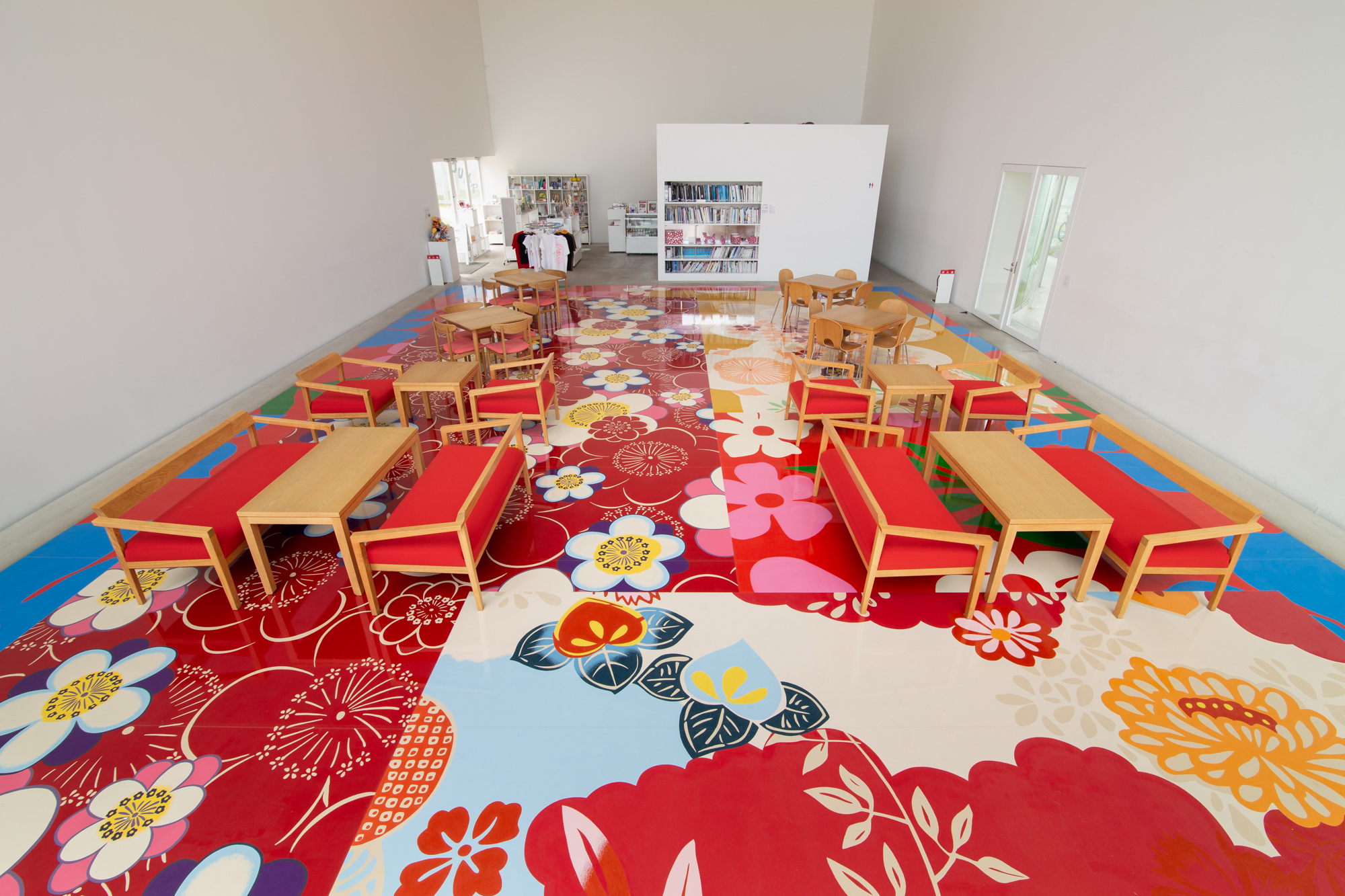
Photo: Oyamada Kuniya
Art Square
Located across the street from the museum, Art Square showcases seven works by five artists, including Kusama Yayoi and Erwin Wurm. Completed in 2010, two years after the museum’s opening, this public space has become a popular spot for the community. It’s not uncommon to see children eating lunch or lying on the grass, and students gathering to hang out. In the summer, the museum also hosts events like the Sanbongi Kouta Night Festival.
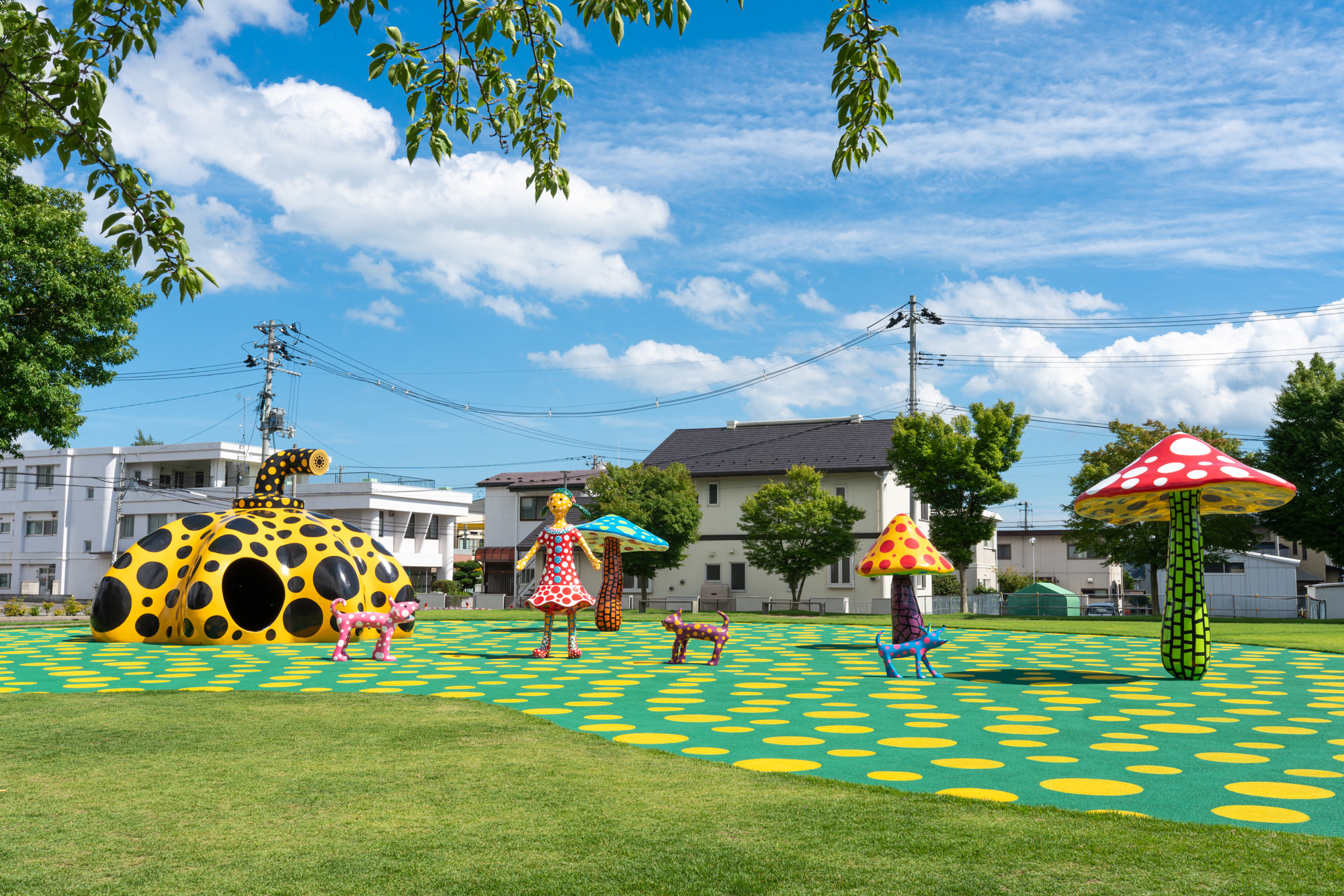
Photo: Oyamada Kuniya
In Conclusion
By blending architecture with the surrounding town, the Towada Art Center extends its reach beyond the walls, turning the plaza and even the town itself into part of the museum experience. As the white modular boxes of the museum spread throughout the town, the line between what constitutes ‘museum architecture’ becomes increasingly blurred. Just as art crosses boundaries—be it of country, generation, or gender—the museum, through its architecture, expands beyond its physical site, offering an enriched sense of space. The museum is evolving from a space that merely houses and preserves art into one that is open and accessible to both the local community and visitors. This shift is supported and facilitated by its architecture, which embraces and encourages this transformation.
Mitome Sayaka
Curator, Towada Art Center. Originally from Tokyo, she worked at the Chichu Art Museum before joining the Total Media Development Institute. She has been a curator at the Towada Art Center since 2016. Some of her key exhibitions include Nawa Kohei: Generative Interface (2022) and Aya Momose: Interpreter (2022-2023).